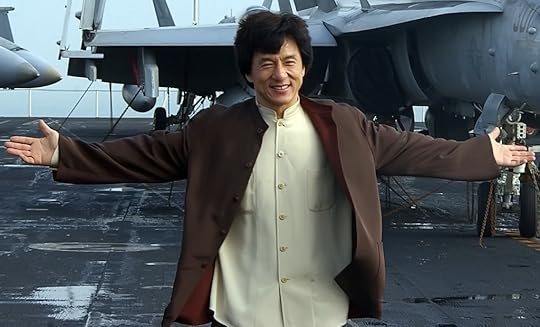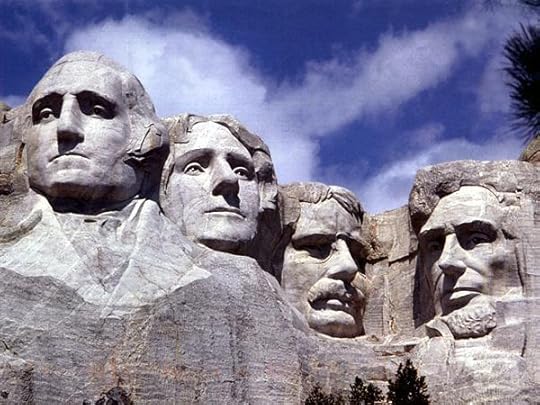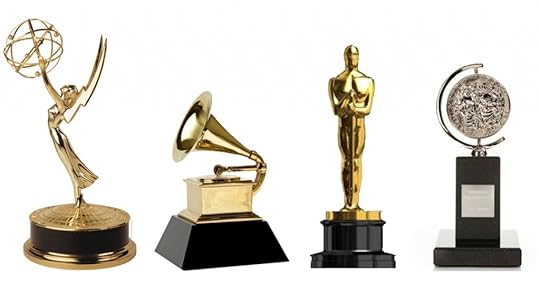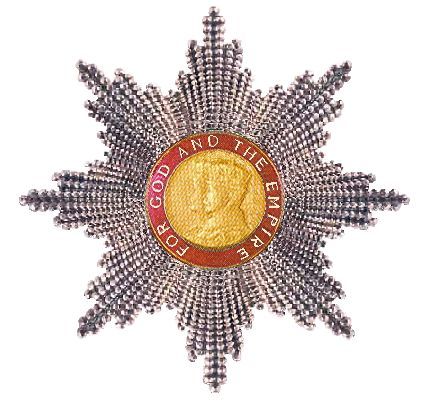Bathroom Readers' Institute's Blog, page 73
November 4, 2016
Kalashnikov Pat & The Helicopter Jailbreaks
Since 1986 there have been 11 helicopter-assisted jailbreaks from French prisons. Three of them involved the same man.
Background
Pascal Payet, a.k.a. “Kalashnikov Pat,” is one of France’s most notorious criminals. In 1997 he was arrested for armed robbery and murder after an attack on an armored truck, during which he shot a guard 14 times. Payet was sent to Luynes Prison in southeast France to await trial.
Escape!
On October 12, 2001, a helicopter appeared above the prison exercise yard. A rope ladder was lowered, Pascal and one on other inmate climbed it, and the chopper flew off. The daring escape shocked French authorities and made headlines worldwide.
Escape II!
In May 2003, Payet was still on the loose when he and some associates decided to go back to Luynes Prison (in a hijacked helicopter) to pick up a few friends. Two of the men belayed commando-style down to the steel net that had been put over the exercise yard after Payet’s previous escape, sawed a hole in it and dropped a ladder through, and three inmates, all cohorts of Payet, climbed up. The helicopter landed in a nearby sports stadium, and the men left in a waiting car. The three friends were recaptured a week later; Payet, some months later. In 2005 he was sentenced to 30 years in Grasse Prison in southeast France.
Escape III!
On July 14, 2007, Payet escaped again—and again it was with a helicopter. This one was hijacked in the nearby seaside resort town of Cannes; it landed on the roof of a building at Grasse Prison half an hour later. Three armed men jumped out and overtook the guards, went straight to Payet’s cell, took him back to the chopper, and flew away. The chopper eventually landed at a local hospital’s heliport, and the men all disappeared. Payet was arrested in Spain two months later and is currently serving a lengthy sentence in a French prison. Where is the prison? Cautious French authorities refuse to disclose its location.
The post Kalashnikov Pat & The Helicopter Jailbreaks appeared first on Trivia Books and Facts | Uncle John's Bathroom Reader.
November 1, 2016
Jackie Chan’s Greatest Hits
He’s one of the greatest action stars of all time. And what’s most amazing is that he does his own stunts. So how does he do all that fighting and perform all those daredevil feats without getting injured? He doesn’t—he’s been injured dozens of times. Here’s a sample of what you (almost) never see.
Body Part: Head
The Movie: Armour of God (1987)
The Stunt: Jumping from a castle wall to a tree, Chan missed the branch and fell headfirst onto the rocky ground below. Result: a broken skull and a brain hemorrhage. With blood pouring from his ears, Chan was rushed to the nearest hospital for emergency brain surgery. He now has a permanent hole in his skull, filled with a plastic plug. The same fall shattered his jaw, knocked out some teeth, and broke his nose.
Body Part: Arm
The Movie: Snake in Eagle’s Shadow (1978)
The Stunt: In a sword fight scene, his opponent’s sword was supposed to be blunt—but it wasn’t. Chan’s arm was slashed and blood went everywhere. He screamed in pain, looked up at his opponent in surprise…and kept right on fighting. The camera kept rolling, and the scene—and the real blood—appeared in the final cut of the film.
Body Part: Neck
The Movie: Mr. Nice Guy (1997)
The Stunt: A stunt called for Chan to be pushed backward into a wheelbarrow on the second floor of a construction site, then fall out of the wheelbarrow to the ground two stories below, where he would land on mats that were out of camera range. Chan missed the mats: He jumped up to let everybody know that he was okay, then immediately passed out. X-rays revealed torn ligaments and dislocated vertebrae in his neck. (He broke his nose filming another scene.)
Body Part: Nose
The Movie: First Strike (1996)
The Stunt: You’d think this would have happened during one of the film’s snowboarding stunts—considering Chan did them with only four days of snowboard training. But it was actually in a scene where he jumped through an extension ladder. He got tangled in the rungs and couldn’t escape before it crashed to the ground, breaking his nose and knocking him unconscious.
Body Part: Shoulder
The Movie: Supercop (1992)
The Stunt: One of his most dangerous stunts ever. Chan had to jump from a building and catch a rope ladder that was hanging from a passing helicopter—with no air bags or cushions below him to break the possible 100-foot fall. Did he fall? No—but the rope ladder crashed through several billboards, breaking Chan’s shoulder.
Body Part: Ankle
The Movie: Rumble in the Bronx (1994)
The Stunt: Chan jumped from a bridge onto the deck of a hovercraft, turning his body as he landed to avoid hitting a wall. But his ankle didn’t turn with him. It stayed planted on the craft’s non-slip deck, breaking in two places. Chan’s doctor set the bone and told him to stay off it, but Chan put a sock over the cast, painted it to look like a sneaker, and finished the movie.
Body Parts: Hands, pelvis, back
The Movie: Police Story (1985)
The Stunt: Chan leaped 10 feet from a narrow handrail (70 feet above the ground) to a nearby pole, slid down the pole, then crashed through a glass ceiling and fell to the ground on his back. The slide peeled the skin off his hands (he was treated for second-degree burns), and the fall dislocated his pelvis and pushed several of his lower vertebrae into the surrounding organs, causing internal bleeding. When he managed to stand up, blood gushed from his mouth. Chan later told reporters that this was the only time in his career when he actually thought he might not survive a stunt. A few hours later he was back on the set.
The post Jackie Chan’s Greatest Hits appeared first on Trivia Books and Facts | Uncle John's Bathroom Reader.
October 31, 2016
6 Monumental Facts About Mount Rushmore
And here’s one more: Those four presidential heads carved into a mountain in South Dakota are not naturally occurring.
It could have been carved into a different formation
It was the idea of South Dakota state historian Doane Robinson to carve faces of iconic historical figures into the side of a mountain in the Black Hills. His reason: to promote tourism into the then-seldom visited region. When he proposed the idea in the 1920s, Robinson initially planned for the project to happen at Needles, a series of jutting, naturally-forming granite columns in the Black Hills. His chief sculptor, Gutzon Borglum talked him out of it—he didn’t think the granite was of high quality enough to sustain the carving project. Furthermore, it was opposed by Native American groups. Instead, Robinson and Borglum settled on Mount Rushmore, which had good granite quality and faced east, ensuring maximum sunlight for workers. (That site was also in the Black Hills and was also adamantly opposed by Native American groups.)
It could have had a different series of four heads
Robinson had picked out four heroes of the West for depiction in giant sculpture on Mount Rushmore: Lewis and Clark, Buffalo Bill Cody, and Red Cloud, a leader of the Lakota who had lay claim to the Black Hills before it was taken over by the United States. Borglum thought four Western heroes was too specific and regional and talked Robinson into doing four American presidents instead: George Washington, Thomas Jefferson, Abraham Lincoln, and Theodore Roosevelt.
Its construction outlived its architects
Construction on Mount Rushmore—which at first was just lots and lots of dynamite blasts—began in 1927. The four faces of the presidents were slowly finished between the years of 1934 and 1939. Borglum died in 1941, forcing his son, Lincoln, to lead up the project. But that didn’t much matter—construction ended in October 1941 when the project ran out of money. (The U.S. entered World War II not long after, which likely would’ve ended construction on the site anyway.)
It was supposed to be bigger
What would Mount Rushmore have looked like if the original plans had been finished? Borglum had planned to depict not just the heads of the presidents, but all four down to the waist.
Additions have been suggested
In the decades since Mount Rushmore was completed, there have been many drives to add another important American to the monument. (And not just presidents: feminist activist Susan B. Anthony was bandied about as an addition in 1935.) Serious consideration has been given to adding Franklin Roosevelt, John F. Kennedy, and Dwight Eisenhower to Mount Rushmore. Grover Norquist, a major Republican strategist is also the chairman of the Reagan Legacy Project. That organization has aimed to get something in all 50 states named after President Ronald Reagan; it has also suggested adding Reagan to Mount Rushmore, or even removing Roosevelt in favor of Reagan.
It’s going to stay at four
Reagan or any other face probably won’t get added anytime soon, if at all: There isn’t any room. According to the National Park Service, when Borglum selected the site, he mapped it out for exactly four faces. There isn’t much additional room to work with, and what is there doesn’t have very workable granite.
The post 6 Monumental Facts About Mount Rushmore appeared first on Trivia Books and Facts | Uncle John's Bathroom Reader.
October 28, 2016
Welcome to Pittsburg
Why did a major city change its name? Because the government said so. Why did it change it back? Because the city asked nicely. For 20 years.
See if you can figure out this riddle:
The Pittsburgh Pirates are one of the oldest teams in Major League Baseball, joining the National League in 1887. The team has won five World Series championships, but only four of them were in Pittsburgh. And yet the team has never moved. How is this possible?
It’s because it won one of those baseball championships in Pittsburg, not Pittsburgh. For about 20 years, the city’s name dropped the H.
The late 19th century was a peak era for English spelling reform, a drive in the United States to simplify English spelling rules—and changing the very letters in words—to make the language easier to understand. Better English communication was a matter of great importance in the late 1800s—the nation was experiencing its biggest immigration numbers ever. (It’s also around this time that the “universal language” of Esperanto was conceived…and failed to catch on.)
In 1891, President Benjamin Harrison signed into law the recommendations of the United States Board on Geographic Names. Among the changes and fixes the Board saw fit (which were resisted here and there):
No more hyphenated town names
The “-borough” suffix should be shortened to “-boro”
The suffix “-burgh” dropped the “h” and became, simply, “-burg.”
The largest city in the U.S. affected by that last change was Pittsburgh, at the time the 13th most populous in the country. Named by British General John Forbes in the 1750s after British politician William Pitt, the “h” was added to reflect Forbes’ linguistic and cultural background—he was Scottish, where the “h” ending is correct (as in Edinburgh). When the city was incorporated in 1816, a printer’s error led to the “h” being dropped in many official documents, leading to both spellings being used. But by the 1890s, “Pittsburgh”—which is how it was spelled on the city charter—emerged as the most popular spelling.
Which meant the citizens were not happy when Harrison and the U.S.B.G.N. forced them to change the spelling over to Pittsburg. For the next 20 years, the Board resisted hundreds of complaints from Pittsburg(h) citizens, all from a drive to change it back spearheaded by Pennsylvania senator George T. Oliver. Finally, in 1911, probably because they were hired of hearing about it, the Board of Geographic names allowed Pittsburg to change its named back to Pittsburgh.
The post Welcome to Pittsburg appeared first on Trivia Books and Facts | Uncle John's Bathroom Reader.
October 27, 2016
Weird Celebrity Auctions
For some reason even the most mundane objects can become valuable if a celebrity owned—or even just touched—them. This article was first published in our 29th annual edition, Uncle John’s Uncanny Bathroom Reader .
Scarlett Johansson
Scarlett Johansson appeared on The Tonight Show in 2008 while sick with a cold. After the show, she was persuaded to put one of her used tissues in a plastic bag and autograph the bag. The bag and tissue sold for $5,300 on eBay. Proceeds were donated to USA Harvest, a charity that feeds homeless people.
Marilyn Monroe
In 2010, a set of Marilyn Monroe’s chest X-rays, taken in Florida in 1954, sold for $45,000 at a Las Vegas auction.
John Lennon
Sometime in the 1960s, John Lennon gave a rotten, extracted tooth to his housekeeper, Dot Jarlett. Lennon wanted her to throw it away, but jokingly told her to give it to her Beatles-crazed daughter. Jarlett did indeed pass it along, and in 2011, the younger Jarlett sold it to Omega Auctions in London. It sold to a Canadian dentist named Michael Zuk for $31,200. Zuk has bizarre plans for the tooth: he wants to extract Lennon’s DNA from it and someday create a John Lennon clone that “could be looked at as my son.”
Rihanna
Los Angeles police commissioner Steve Soboroff spotted pop star Rihanna at a Los Angeles Lakers game in May 2014. They met, but then Rihanna accidentally knocked Soboroff’s phone out of his hand. When it fell to the ground and broke, the singer tried to make up for the loss by signing the phone, “Sorry, I love LAPD, Rihanna.” Soboroff auctioned off the broken phone for $65,000 and donated the money to the LAPD Cadet Program.
Michael Jackson
While Michael Jackson was filming a Pepsi commercial in 1984, a fireworks display went off too early, and Jackson’s hair caught fire. He was badly burned, and in the chaos lots of his charred hair fell to the ground. A producer named Ralph Cohen collected some of it, and in 2009, he sold it at an auction. Price of 12 strands of the King of Pop’s hair: $1,600.
Lady Gaga
One of the black acrylic nails Lady Gaga wore during a 2012 concert in Dublin, Ireland, broke off during her performance. After the show, a member of the stage crew found it, snatched it up, and sold it for $13,000.
Willie Nelson
In October 2014, Willie Nelson’s signature braids were sold at an Arizona auction house for $37,000. They weren’t even fresh. Cut off in the 1980s, Nelson had given them as a present to country singer Waylon Jennings.
Bryan Adams
On a tour of Wales in 2004, Canadian pop star Bryan Adams took off his Armani socks in the back of a taxi. He left them behind, and the car company sent them to an auction house. Winning bid on the “Summer of ’69” singer’s dirty socks: £541, or about $770.
Queen Elizabeth II
In 1968, Queen Elizabeth II accidentally left behind a pair of monogrammed silk underwear on a private plane in Chile. Years later, the pilot gave the panties to Miami artist Baron Joseph de Bicske Dobronyi, and in 2012 his family auctioned them off for $18,101.
Whitney Houston
In a 2015 auction, Julien’s Auctions of Los Angeles offered a 1988 Visa credit card application filled out by Whitney Houston. Her request for a $5 million credit line was approved; the application includes Houston’s address and Social Security number.
Liberace
A year after he died in 1987, an auction of Liberace’s personal effects was held in Las Vegas. The weirdest item: Liberace’s Nevada driver’s license, bearing his full name, Wladziu Liberace. It sold for $1,700.
Corey Haim
By 2001, 1980s heartthrob Corey Haim had fallen on hard times. He approached a Las Vegas celebrity memorabilia store called Startifacts about auctioning off some of his possessions. One item—a bad tooth that had been removed by a dentist—was almost included…but was pulled at the last minute. (Get it? Pulled!)
Wil Wheaton
Wil Wheaton starred in Stand By Me and on Star Trek: The Next Generation. Today he’s a blogger and Internet personality. In 2012, he put a dented table-tennis ball he found in his garage on eBay. Wheaton named it “Silas.” It sold for $1,135.
Pete Best
Pete Best’s claim to fame: he was the drummer fired by the Beatles right before they became the most popular band in the world. Despite being kicked out of the Beatles, he signed a Beatles drum head in 2015, and it was auctioned off for $1,024. (At the same auction, a baseball signed by the Fab Four sold for $100,000.)
Gary Coleman
Former child star Gary Coleman auctioned off a number of personal items on eBay in 2008 to help pay off some hospital bills. Among the lot: a pair of blue, size XL Gap Kids sweatpants that Coleman autographed. The winning bid: $400,000. But the payment was never received, so the sweatpants went to the second-place bidder—talk show host Jimmy Kimmel. His bid: $500.
The post Weird Celebrity Auctions appeared first on Trivia Books and Facts | Uncle John's Bathroom Reader.
October 26, 2016
The Last Time the Chicago Cubs Were in the World Series
“ The Curse ” has been broken! The Chicago Cubs are in the World Series for the first time since 1945. Here’s a comparison between now and then.
Embed from Getty Images
Today there are 30 team in all of Major League Baseball. In 1945, there were only 16. As far as the other major team sports go, there were only 10 teams in the NFL (all of them located in the northeast and upper Midwest) six teams in the NHL, and the NBA hadn’t even been founded yet.
This year, the World Series will be broadcast nationwide on the Fox network. In 1945, TV was just barely emerging as a viable technology. The first World Series wasn’t televised until 1947 on a series of NBC affiliates in New York, Philadelphia, Baltimore, Washington, D.C., and Schenectady, New York.
The last pro baseball game longtime Los Angeles Dodgers broadcaster Vin Scully called was the Cubs’ National League Championship Series Game 6 win over his Dodgers. In 1945, Scully was calling games for the Fordham Rams in New York City.
Population of Chicago in 1945: about 3.3 million, enough to be the second-largest city in the U.S. (behind New York). Now: about 2.7 million, and the third-biggest in America (behind New York and Los Angeles).
Only two Major League ballparks in use today were also in use the last time the Cubs played in the World Series. They are Fenway Park, where the Boston Red Sox play, which opened in 1912. The other, opening in 1914, is Wrigley Field, home of the Chicago Cubs.
Cost of a seat in the upper decks of Wrigley Field to the 1945 World Series: about $7. Average asking price for a ticket to see a World Series game at Wrigley Field in 2016: $7,200.
The Cubs didn’t win the 1945 World Series, losing to the Detroit Tigers. The last year the Cubs took home the title was in 1908. Less than 100 Americans currently alive had been born at that time.
The post The Last Time the Chicago Cubs Were in the World Series appeared first on Trivia Books and Facts | Uncle John's Bathroom Reader.
October 25, 2016
Who’s the Next to EGOT?
The EGOT is the “grand slam” of American entertainment awards. It’s an acronym and unofficial designation to describe someone who has won a competitive (meaning non-honorary) Emmy, Grammy, Oscar, and Tony Award.
Only 12 people have done completed the EGOT: composers Richard Rodgers, Marvin Hamlisch, Jonathan Tunick, and Robert Lopez; actresses Helen Hayes, Rita Moreno, Audrey Hepburn, and Whoopi Goldberg; actor John Gielgud; writer/directors Mel Brooks and Mike Nichols; and producer Scott Rudin.
Plenty of creative types are just one E,G,O, or T away from completing the sweep. Here’s a look at who might be next.
Elton John needs an Emmy
The rock legend has unsurprisingly won quite a few Grammys, and he won a Best Song Oscar for “Can You Feel the Love Tonight” from The Lion King and a Tony for scoring the musical version of the opera Aida.
Stephen Sondheim needs an Emmy
The highly influential Broadway composer (Sweeney Todd, Into the Woods, West Side Story) has a bunch of Tony Awards, and Grammy Awards for cast recordings of his Broadway musicals. In 1991, he won an Oscar for writing a song for Dick Tracy.
Maggie Smith needs a Grammy
Smith isn’t a singer, but she’s a successful actress, with four Emmy Awards, two Oscars, and a Tony to her name.
Jeremy Irons needs a Grammy
Considering he’s got two Emmy Awards for voice-over work, he could feasibly get a Grammy for narrating an audiobook.
Lin-Manuel Miranda needs an Oscar
The creator and star of Hamilton took home a couple of Tony Awards this year (for Best Musical and Best Original Score—both of which he won in 2008 for his last musical, In the Heights). Both shows’ cast albums won Miranda Grammys. And he’s got an Emmy for writing original songs for the broadcast of the Tony Awards in 2014. All he’s missing is an Oscar—which he could be up for as early as 2017. He wrote the songs for Disney’s upcoming animated movie Moana.
Trey Parker and Matt Stone need an Oscar
Amazingly, the two guys who created South Park are incredibly close to an EGOT. They’ve won multiple Emmys for their long-running cartoon series, took home Tonys for their musical The Book of Mormon, as well as a Grammy for the album version of The Book of Mormon. All Parker and Stone are missing is the Oscar—which they were nominated for in 2000. “Blame Canada” from the movie South Park: Bigger, Longer, and Uncut, was nominated for Best Song.
The post Who’s the Next to EGOT? appeared first on Trivia Books and Facts | Uncle John's Bathroom Reader.
October 24, 2016
Celebrity Collections
You could use your wealth to buy cars, houses, yachts…or action figures. This article was first published in our 29th annual edition, Uncle John’s Uncanny Bathroom Reader .
Rick Springfield
Rick Springfield, who performed the 1980s hit “Jessie’s Girl”, has one of the largest and most complete collections of Star Wars toys in the world.
Demi Moore
Demi Moore has so many vintage dolls—more than 2,000—that she had to build a separate house to store them all. Most of the dolls are more than 100 years old.
Tom Hanks
Tom Hanks owns more than 200 portable manual typewriters, most of them manufactured before 1960.
Will Ferrell
Will Ferrell has made many talk show appearances with a parrot or some other bird on his shoulder. Those are his actual birds. In fact, he has an aviary on the grounds of his California home, which is home to an estimated $7.8 million worth of rare birds.
Penelope Cruz
Penelope Cruz owns 500 different styles of coat hangers. Her collection doesn’t include any wire ones.
Dan Aykroyd
Dan Aykroyd, star of Dragnet, owns hundreds of police badges.
Rod Stewart
Rod Stewart has a model train collection and a scale model town that contains more than 100 buildings. He takes the trains and buildings with him on tour, too. Stewart books an additional hotel room so he can set up his trains and play with them.
Mila Kunis
Mila Kunis collects Star Trek figurines from the 1960s and 1970s.
Quentin Tarantino
Quentin Tarantino loads his films with pop culture references, so it’s not surprising that he collects pop culture artifacts. He started with old lunch boxes, but thought they were too expensive, so he started collecting movie and TV-themed board games.
Harry Connick Jr.
Harry Connick Jr. owns several hundred pairs of cuff links…but he never wears any of them.
Sally Struthers
Sally Struthers’s house is full of cat items: cat paintings, cat posters, plush animals, figurines, doorstops, planters, cookie jars, lamps…
Nicolas Cage
Nicolas Cage has one of the largest Elvis Presley memorabilia collections outside of Graceland. (From 2002 to 2004, Cage was married to Elvis’s daughter, Lisa Marie Presley.)
The post Celebrity Collections appeared first on Trivia Books and Facts | Uncle John's Bathroom Reader.
How Chess Pie Got Its Name
It’s a simple dessert…with a complicated story.
Chess pie is a classic, old-fashioned Southern dessert. It’s sort of like a cheesecake, in that it’s refrigerator-hardened and sweetened custard set inside of a pie crust. The first printed recipe dates back to the mid-1700s in a cookbook called Martha Washington’s Booke of Cookery. The recipe has been simplified over the years, but that one calls for a quart of cream, 13 eggs, a pound of butter, and a pound of flour. It’s still made with roughly those same ingredients (although in smaller proportions) and lemon is a common addition.
The end result is a yellow and white pie. One would think that something called “chess pie” would have an alternating pattern of black and white squares. So where does the name come from? There are three major theories, and all involve words being misheard and corrupted over time.
Just Cause
Chess pie originated in the South. According to legend, a cook on a plantation made up this kind of pie (or something very close to it) and was asked what she had made. Her answer: “just pie,” which, delivered in a Southern accent could be misheard as “chess pie.”
It’s a pretty simplistic answer, but the folk legend associated with chess pie says that
Close to the Chest
Before the advent of refrigeration, other methods of preservation were necessary to keep food fresh. For pies, a pie chest was used. (Also called a pie safe, a pie chest was a freestanding piece of furniture that kept pies and other foods locked up and safe from rats and mice.) Chess pie was one such food item stored in a pie chest and became so popular that it became synonymous with pie chests. Its name “chest pie” was eventually corrupted to “chess pie.”
Cheesy Does It
Or, “chess” could be a corruption of “cheese,” as in “cheese pie.” In that Martha Washington cookbook, the recipe isn’t called “chess pie.” It doesn’t have a name at all, instead introduced with the directive “to make very good cheesecakes without cheese curd.” In other words, chess pie is a variation of cheesecake.
The post appeared first on Trivia Books and Facts | Uncle John's Bathroom Reader.
October 21, 2016
Honourees Who Declined Their Honour
Twice a year, the English monarch bestows “honours” upon notable Britons who have made major contributions to the world, including scientists, entertainers, and politicians. But not everybody who is named “Sir” or “Dame” or an “Officer of the British Empire” wants to be one. Here are a few who told the Crown, “Thanks, but no thanks.” This article was first published in our 29th annual edition, Uncle John’s Uncanny Bathroom Reader .
George Harrison
In 2000, George Harrison turned down an OBE (Officer of the British Empire). He was miffed that his Beatles bandmate Paul McCartney had been knighted in 1997 and he hadn’t been.
Ken Livingstone
Ken Livingstone served as mayor of London from 2000 to 2008 and was instrumental in bringing the 2012 Summer Olympics to the city. He turned down a CBE (Commander of the British Empire) for his work on the Olympics, because he felt that honours should be given only to private citizens, and not to politicians.
L. S. Lowry
L. S. Lowry was a painter who specialized in portraits of working people, typically factory workers. He considered himself a man of the people and was so opposed to the monarchy that he declined an OBE in 1961, a CBE in 1961, a knighthood in 1968, and being named a Companion of Honour in 1972 and 1976.
Doris Lessing
Doris Lessing won the Nobel Prize for Literature in 2007. She accepted that, but 30 years earlier she rejected the chance to be a Dame of the British Empire because the “British Empire” no longer existed.
J. G. Ballard
J. G. Ballard, author of Crash and Empire of the Sun, said no to a CBE, calling the honours system “a charade that helps to prop up the top-heavy monarchy.”
Alfred Hitchcock
Film director Alfred Hitchcock declined a CBE in 1962. Maybe he was just holding out for something bigger, because he accepted a knighthood shortly before his death in 1980.
C. S. Lewis
C. S. Lewis, Oxford professor and author of The Chronicles of Narnia, turned down a CBE in 1952 because he thought it was “too political.”
Joseph Corre
Businessman Joseph Corre founded the international lingerie store chain Agent Provocateur. He turned down honours in 2007 because he felt British prime minister Tony Blair was “morally corrupt.”
The post Honourees Who Declined Their Honour appeared first on Trivia Books and Facts | Uncle John's Bathroom Reader.















